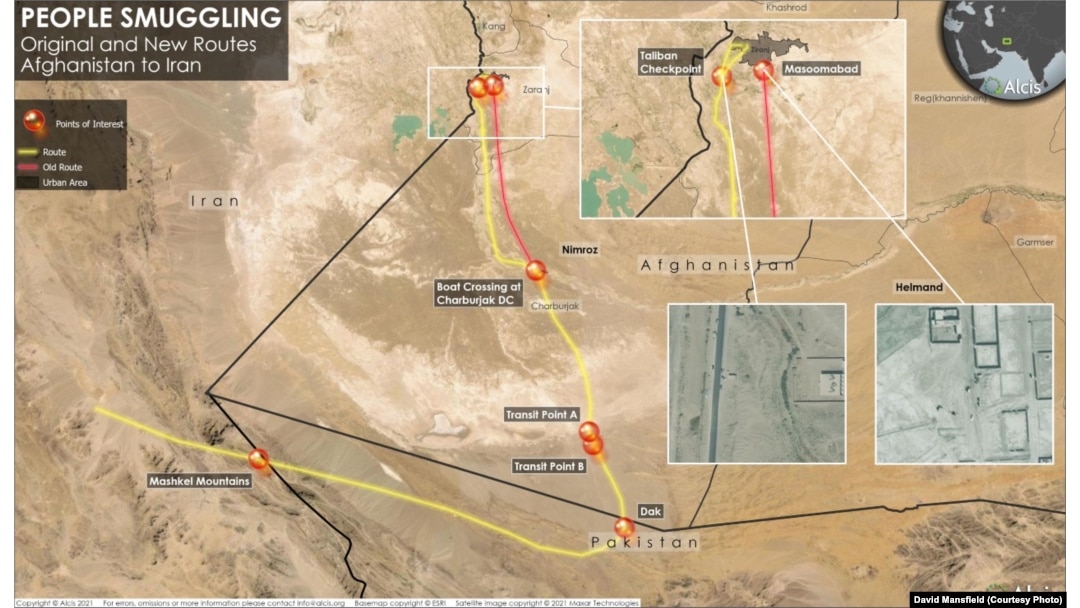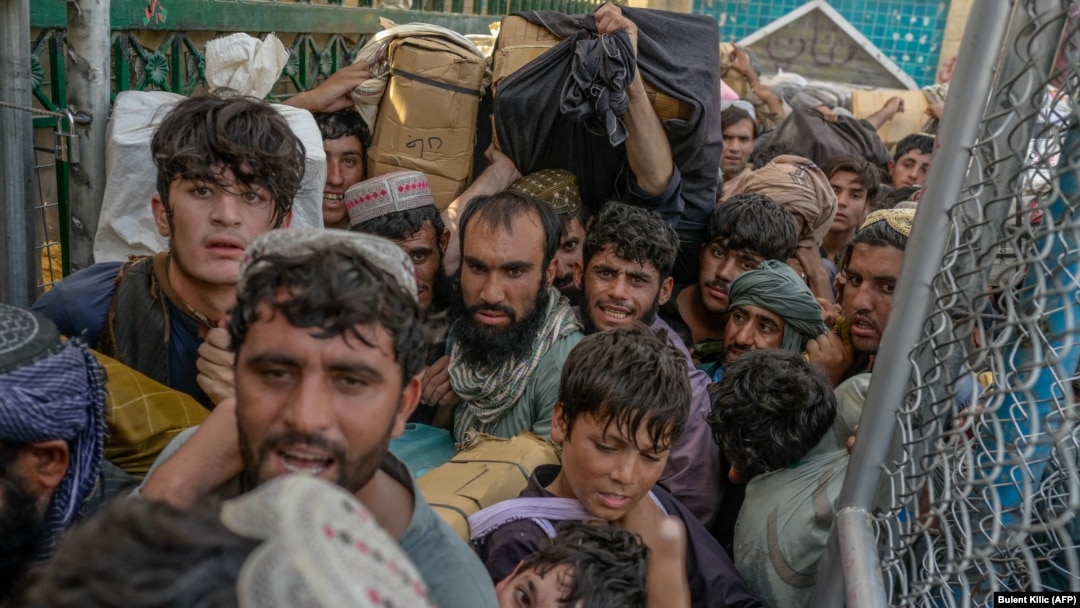Murad, a former public prosecutor, has been living in hiding since the Taliban seized control of Afghanistan in August.
Over the years, the attorney helped put some of Afghanistan's most dangerous criminals behind bars, including Taliban fighters. But many of them were freed as the militant group swept the country in the summer.
Murad, who is at risk of reprisals, is desperate to flee his homeland. He has lodged multiple applications for asylum abroad but has yet to hear back from foreign immigration authorities.
He now plans to join the thousands of Afghans who are escaping the country each week. Many of them pay smugglers to take them westward to neighboring Iran, from where some will hope to reach Europe.
“My hope was that a foreign country would accept my request for asylum,” Murad, who requested that his real name not be used out of concern for his safety, told RFE/RL’s Radio Azadi. “But if I can’t leave legally, I will turn to illegal means.”

People smuggling routes from Afghanistan to Iran.
The journey is dangerous. Afghans who have illegally crossed borders in the region have been arrested, beaten, shot at, and even killed by border guards, smugglers, and criminal gangs. Others have drowned or died of illness and exhaustion.
But for many Afghans fleeing the Taliban’s repressive rule and the country's devastating economic and humanitarian crises, their dreams of safety and jobs are worth the risk.
The number of Afghans fleeing abroad has surged since the Taliban seized control of Kabul on August 15. During a two-week evacuation effort that ended on August 30 and was marred by chaos and violence, Western nations airlifted over 120,000 Afghans abroad. Since then, at least 300,000 Afghans have fled by land.
Experts say there could be a full-blown migrant crisis on Europe’s doorstep by next year if the trend continues, like the massive influx of refugees and migrants who crossed into the continent in 2015.
‘Large Numbers’
Afghanistan's neighbors have closed their borders to Afghans seeking to flee their war-torn country. Afghanistan’s land borders with Pakistan and Iran are currently open only to Afghans with the required passports and visas, while the borders of Tajikistan and Uzbekistan are completely closed.
But that has largely failed to curb the exodus from Afghanistan.
“It is clear the border closures did restrict the number of people departing at the official crossings, but people continue to leave via the most difficult and circuitous routes and in large numbers,” says David Mansfield, an independent researcher who tracks smuggling networks in Afghanistan.
Mansfield says hundreds of pickup trucks packed with men, women, and children leave daily from Zaranj, the capital of the southwestern province of Nimroz, Afghanistan’s smuggling capital. From Zaranj, the vehicles enter Pakistan and then cross into Iran.
In May, up to 200 flatbed pickup trucks, each transporting up to 20 people, departed daily from Zaranj, he says. Since the Taliban takeover, that figure has jumped dramatically.
“During October, up to 600 cars left each day with as many as 300,000 leaving Afghanistan that month alone,” he said.
Afghans being smuggled sit atop pickup trucks from Zaranj in Nimroz Province.
The Norwegian Refugee Council (NRC) said last month that up to 5,000 Afghans have been illegally crossing into Iran daily since mid-August.
Some of the Afghan refugees and migrants who make it to Iran remain there illegally, taking on menial jobs to earn enough money to send back to their families in Afghanistan. But Mansfield says many will “look to travel farther and make it to Europe if they can.”
‘No Hope Now’
Among those fleeing are young, educated Afghans, many of whom were granted greater freedoms and opportunities following the U.S.-led invasion in 2001 that toppled the Taliban regime from power.
Suleiman Azizi, a university student from Kabul, says the economic collapse and reversal of freedoms following the Taliban takeover have convinced him to flee his homeland.
“I was born during the war but was always hopeful that it would end someday,” he told Radio Azadi. “But the way the situation has unfolded, there is no hope now. There is no reason to stay back in the hope that our country will be rebuilt.”
Since regaining power, the Taliban has waged a campaign of extrajudicial killings, violently cracked down on the free press, and denied the rights of girls and women to work and attend school.
In response to the militant group’s takeover, foreign governments and organizations cut off aid and froze Afghan government assets, a move that observers say has sunk the economy and worsened the humanitarian crisis in the country of some 38 million people.
People trying to leave Afghanistan gather around a Taliban checkpoint in Nimroz Province near the border with Iran.
International aid organizations warn that Afghanistan is on the brink of a humanitarian catastrophe.
Babar Baloch, a spokesman for the United Nations Refugee Agency who recently toured Afghanistan, says that the number of Afghans in need of urgent assistance is soaring.
Baloch says some 5 million Afghans were already internally displaced due to war and severe drought before the Taliban takeover. Since then, he says, the number of Afghans dependent on food aid has risen to 23 million from 18 million.
“The sense of desperation and sense of destitution is increasing by the day,” he told RFE/RL.


